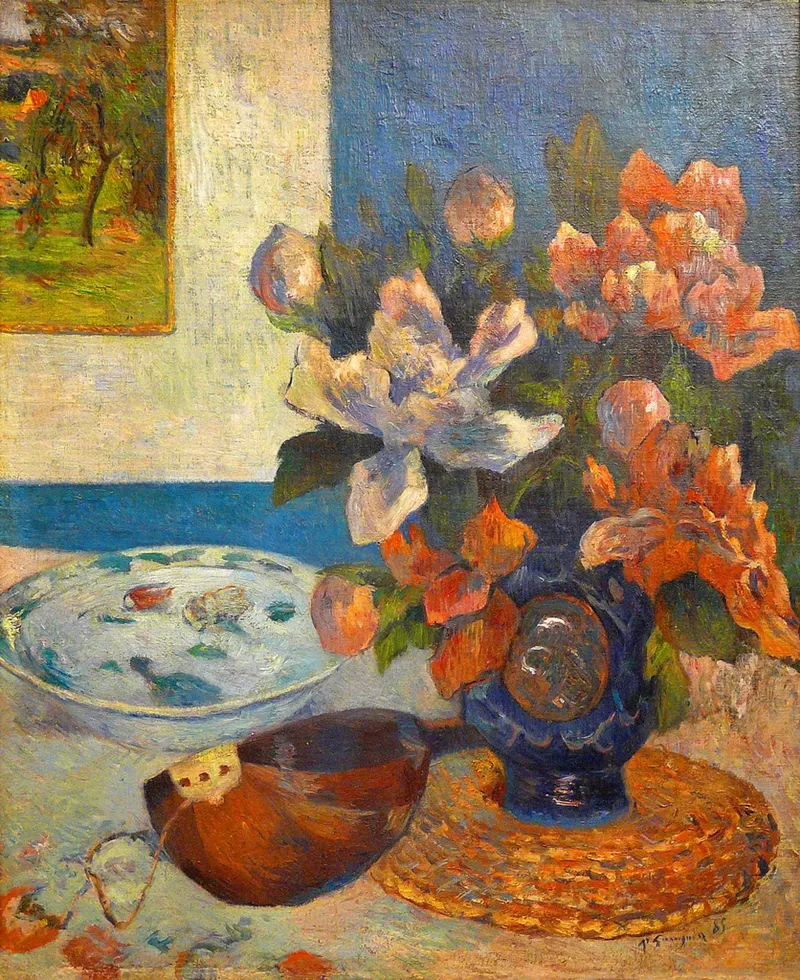Eugène Henri Paul Gauguin [1848-1903] was a leading French Post-Impressionist artist. He was an important figure in the Symbolist movement as a painter, sculptor, print-maker, ceramist and writer. His bold experimentation with colouring led directly to the Synthetist style of modern art while his expression of the inherent meaning of the subjects in his paintings, under the influence of the cloisonnist style, paved the way to Primitivism and the return to the pastoral. He was also an influential proponent of wood engraving and woodcuts as art forms.
Home » Tutti i post
.jpg)
Paul Gauguin | Post-Impressionist painter | Still life
Daniel Wall, 1965 | Intense Impressionist painter
Daniel Wall is the originator of Intense Impressionism, which is characterized by unsurpassed intensity and boldness.
Started in the 1980s by Daniel Wall, Intense Impressionist techniques include big, conspicuous strokes created with palette knifes, extreme texture with heavy paints, intensified vibrant colors, and exaggerated striking effects of lights.
Daniel Wall's Intense Impressionist landscape and cityscape paintings are very much loved by the collectors around the world.

Sergey Ivchenko ~ Abstract Expressionist painter
Sergey Ivchenko [Сергей Ивченко] 1954-2008, Russian painter, was born in Frankfurt on the Oder, Germany. 1976 Graduated from Art Institute, Moscow, Russia. 1975-1991: worked in various art studios in the USSR. 1990: as a member of the group of artists took part in the action "Falling of the Berlin wall", Berlin, Germany. 1991 immigrated to Israel. 1992-1994 worked as a computer graphic artist, and then as an Art Director in the "Utopia" company, Haifa.

La nascita di Venere, 1863 | Émile Zola contro Cabanel
Alexandre Cabanel (1823-1889), pittore francese, ottenne la grande fama nel 1863, con la Nascita di Venere, acquistata da Napoleone III nel 1863. Lo stesso anno, Cabanel venne nominato professore all'École des Beaux-Arts e membro dell'Académie des Beaux-Arts.
Cabanel, rigorosamente accademico nello stile, pittore di storia, di genere e ritrattista, fu nemico del Naturalismo e dell'Impressionismo, mentre fu attaccato dallo scrittore Émile Zola e da tutti coloro che difendevano la necessità di un'arte meno soave e più realista.

Monet: Ecco il mio atelier!
In una intervista, realizzata nell'aprile del 1880 da Emile Taboureux e pubblicata sul settimanale "Le Vie moderne" il 12 giugno 1880, al giornalista che gli chiedeva di mostrargli il suo studio, Claude Monet rispose:
- "Il mio atelier?
Ma non ho mai avuto un atelier, io, e non capisco come ci si possa chiudere in una stanza.
Per disegnare si, non certo per dipingere".
Quindi, in un gesto eloquente, puntato in direzione di Vétheuil e della Senna aggiunse:
- "Ecco il mio atelier!"
Pierre-Auguste Renoir | Monet nel suo giardino, 1873
Iscriviti a:
Commenti (Atom)

.jpg)


